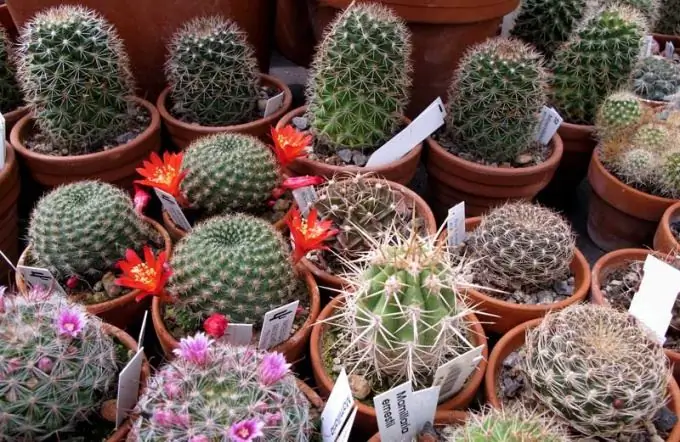The homeland of cacti is arid regions, in which it rains, if it falls, they do it so rarely that succulents absorb moisture and live for a long time, only thanks to the accumulated reserves. Frequent watering of cacti is harmful, their root system quickly decays and dies. But even without watering, the plant cannot be left.

Instructions
Step 1
There is no single answer to the question: "How to water cacti?" Because the frequency of watering and the amount of water consumed by the plant will differ from variety to variety and from season to season. In winter, cacti sleep, so they can be taken out to a cool room with a temperature of 8-10 ° C and left without watering. If the earth seems to you completely dry, you can slightly moisten it, but this should be done no more than once a month. Water for winter watering can be slightly acidified, this will lower the hardness of the water. In this way, you will avoid contamination of the soil with mineral deposits.
Step 2
With the onset of spring, water the cacti well with very warm water and transfer them to a warm room. After hibernation, the plants will wake up and release their first flower buds. Wait with watering until the buds grow. As soon as the plant enters the active vegetative phase, it is necessary to increase the frequency of its watering up to 1 time in 4-5 days. Spraying a cactus daily in the morning with hot water from a spray bottle will help recreate conditions close to natural for it. Even in the driest places, abundant dew falls on the plants in the morning, which serves as an irreplaceable source of moisture.
Step 3
Closer to summer, cacti will bloom, their flowering is very short-lived, and in the second half of summer you need to start preparing for the winter season. Gradually reduce the temperature and humidity in the cactus room, and reduce the frequency of watering. With the onset of the first cold weather, stop watering completely.
Step 4
The larger the cactus, the more moisture it stores for itself for the winter, so large fleshy specimens will perfectly overwinter dry. In pots of small plants, check the soil periodically. Even if it looks dry, the soil inside the pot may be damp, so check the substrate with a wooden knitting needle. Let the plants survive the winter dormant period, and in the spring they will delight you with new flowers of unearthly beauty.






